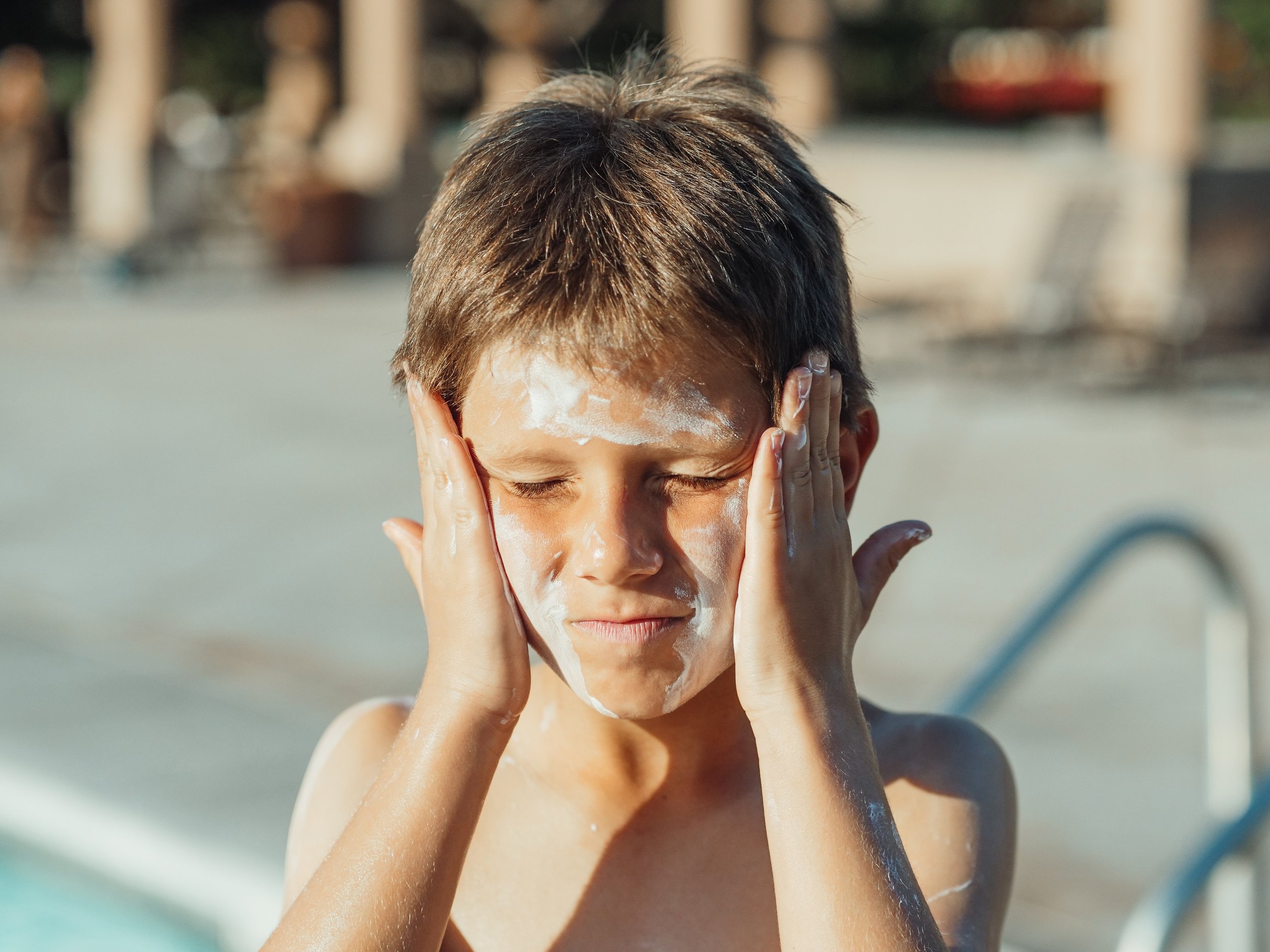Sunscreen Basics
You’re planning a family trip to the local splashpad, and you know you need sunscreen for everyone. There are so many options at the store – what should you choose? Let’s cover the basics, with a few frequently asked questions:
Who needs sunscreen?
Everyone. One out of every five Americans – of all ages, genders, and skin tones – will get skin cancer in their lifetime. It is the most common cancer in the United States. Yet most cases of skin cancer can be prevented by protecting your skin from the sun’s harmful ultraviolet (UV) rays.
The truth is that no sunscreen can fully protect you. In addition to sunscreen, it’s important you stay in the shade when you can, cover up your skin, avoid tanning beds, and be extra careful when you’re around water, snow, and sand. These reflect the sun’s rays and increase your chance of sunburn.
What sunscreen should I use?
It doesn’t matter if you choose to use a cream, spray, stick, or gel. What matters is that it is broad spectrum, SPF 30 or higher, water resistant, put on 15 minutes before you go outdoors, and put on again at least every two hours (more often if you’re in water).
Broad-spectrum protection. This means it protects you from the sun’s UVA and UVB rays. UVA rays cause your skin to age quickly. UVB rays burn skin.
SPF 30 or higher. Think of SPF as “sunburn protection factor.” The higher the number, the more UVB light the sunscreen can filter. SPF 30 can filter 97% of the sun’s UVB rays, but only if you use enough and apply it correctly. A higher SPF, like 50 or 75, filters out only slightly more than SPF 30. No SPF number can filter out 100% of the sun’s rays.
Water resistant. This designation means the sunscreen will work for 40 minutes in the water. After that time, you will need to put it on again. Very water resistant sunscreen will work for 80 minutes and then must be put on again. There is no such thing as waterproof sunscreen. Even if your skin stays dry, you still need to put sunscreen on every two hours.
Sunscreens are usually good for three years. If it’s older, throw it out. If it looks, smells, or feels different from when you first opened it, throw it out and get a new bottle. Don’t keep your sunscreen in direct sunlight or hot environments, like inside a car. That speeds up how quickly it goes bad.
How much should I put on?
Most adults need about 1 ounce – or enough to fill the palm of your hand – to fully cover their body. It can be harder to judge the amount of spray sunscreen, so follow these tips:
Spray until your (or your child’s) skin glistens, then rub the sunscreen into the skin to get even coverage.
Spray into your hands and then apply to the face, ears, and neck to avoid getting it in your mouth.
Stay away from heat, open flame, or wind when you put on spray sunscreen.
Should I get different sunscreen for my baby? For other children?
Babies over six months, toddlers, and children should use sunscreen with the active ingredient zinc oxide or titanium dioxide. These work better for anyone with sensitive skin. The sunscreen should be put on often as it is for adults, and in an amount that covers the full body.
It’s best to not put sunscreen on babies younger than 6 months. If they must be outside, keep them in shade and put them in lightweight clothing that covers their skin. You can also use wide-brim hats and sunglasses. If you don’t have shade, you can use a very small amount of sunscreen on uncovered skin. Wash it off once you get indoors.
What if it’s cloudy?
You still need sunscreen when it’s cloudy! Up to 80% of the sun’s harmful UV rays can go through cloudy skies and burn your skin.
Oops! I got a sunburn. What do I do?
The first thing you should do is get out of the sun and go indoors. Take cool baths or showers and gently pat your skin dry. You can use aloe vera, soy moisturizers, or calamine lotion to sooth your skin. Talk to your doctor about taking aspirin or ibuprofen to deal with pain or swelling. Be sure to drink extra water. If you get blisters, don’t pop them – it can cause infection. Instead, keep them clean and put on petroleum jelly to protect. Always ask your healthcare provider if you have questions.
Looking for more info? The American Academy of Dermatology has an entire section about sun protection on their website. Make sure to check out their videos below for even more tips on sun safety.
How to avoid common sunscreen mistakes
How to use stick and spray sunscreen
Source: American Academy of Dermatology



